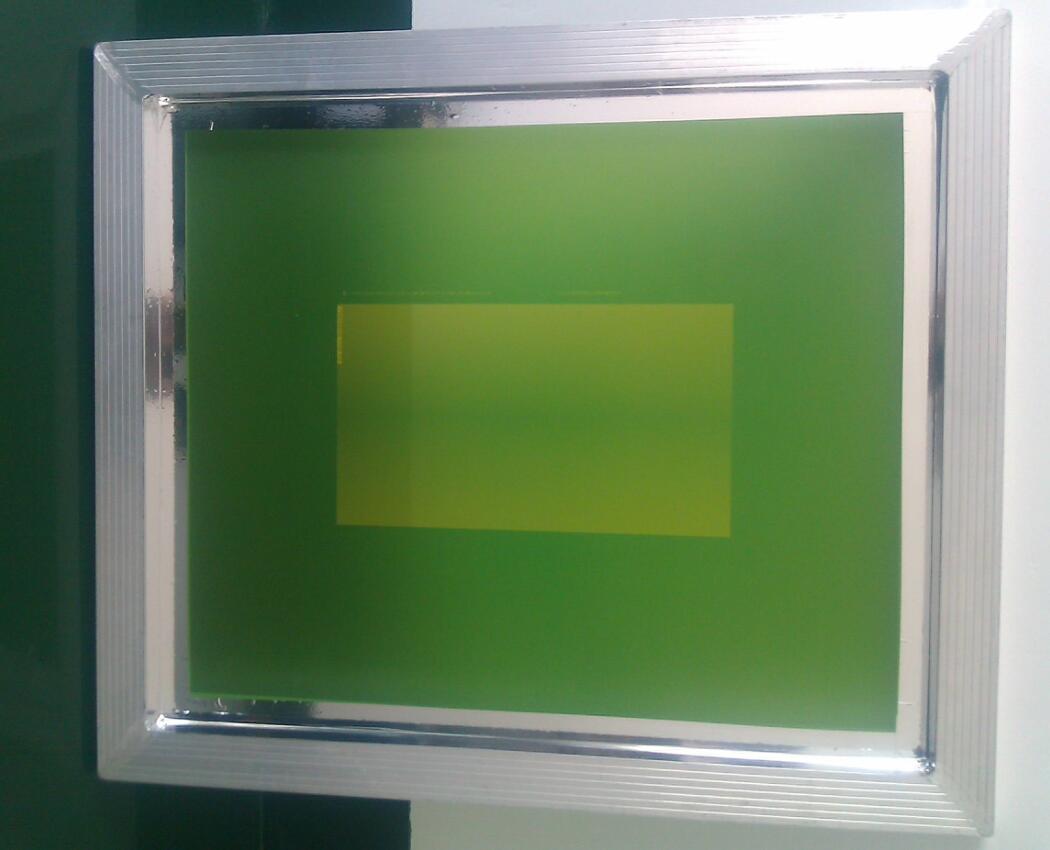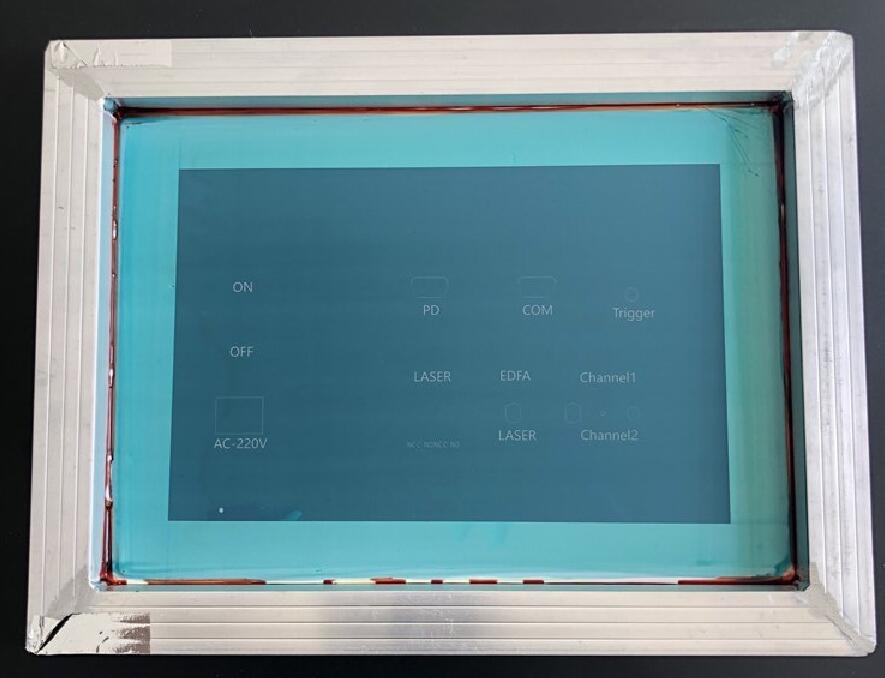PCB Screen Printing Board Manufacturing Process
PCB Bandage
PCB Bandage Steps: Frame Cleaning--Horizontal Verification--Layered Gel--Wire-pulling--Tension Measuring--Glue--Offline, Edge-sealing--Storage
Job description:
1. Due to the reuse of the mesh frame, there are residues of viscose, mesh and other impurities around the mesh frame, which must be cleaned to avoid affecting the adhesion between the mesh and the mesh frame.
2. Place the mesh frame on the platform (horizontal) to check if the mesh frame is deformed. If it is deformed, it needs to be leveled.
3. Clean up the untouched mesh frame and the mesh, then apply a layer of glue without hardening agent to enhance the adhesion between the mesh and the mesh frame after pulling.
4. After about 10 minutes of the first glue application, place the mesh frame on the pulling platform and adjust the relative position and height
5. Select the mesh, loosen the clip around, lay the mesh flat on the frame, then evenly clip the mesh into the clip, no wrinkles, pay attention to the loose mesh around the corners, the clip must be locked, and there must be no gap between the clip and the clip (for example, automatic lifting rack, manual pulling mesh).
6. Tension: the first tension is 26, and the tension for 5 minutes is 24; The second tension was 28, and the tension was 26 after 5 minutes of rest. The third tension was 32, and the tension was 30 after 5 minutes of rest. Five-point tension 32 was corrected for the fourth time, and glue tension 30 was applied after 20 minutes of rest. The mesh tension is 28 after 15 minutes of gel curing and can only be made after 72 hours of rest (in one meter) * One meter full automatic production line uses screen as an example). The tension of the commonly used mesh yarn is (100 T, 110 T, 120 T are 30 +2 Newton) (77 T, 51T are 35 +2 Newton) (24 T is 50 +2 Newton)
7. Brush the prepared glue evenly over the side of the mesh and the mesh with a small brush. Do not drop the glue into the middle of the mesh. After 8 minutes of drying, you can use a scraper glue to press the glue into the place where it does not fit perfectly for about 10 minutes before the glue is completely dried out (open air drying should be used to enhance drying).
8. Use a paper cutter to remove unwanted mesh around the screen and mark the date, mesh and tension when going off the screen (in order to observe the change of tension). In order to prevent the mesh washing water (white water) from penetrating, seal the inside corner of the frame with red glue, and then seal it with waterproof tape over the next surface of the frame and the screen, which also prevents the drug from penetrating.

PCB sunscreen
1. Wash the mesh: use the grinding cream to remove grease (new mesh), ghost plaster to remove graphics (old mesh), remove pulp powder to remove mesh pulp, blue oil, wash impurities with anti-white water, rinse the mesh with detergent, rinse it with high-pressure water gun, and finally clean it with pure water.
2.Drying: --The oven setting temperature should be less than 48 degrees Celsius.
3. Use the sticker film method: clean the net and clean it with clean water once more. Select water film by increasing 20% according to the engineering film mosaic graphics. Press one end of water film onto the net with a triangle ruler, then scrape up slowly with a triangle ruler, then gently scrape flat with a rubber scraper, and wipe off excess water with a towel to dry.
4. Use photosensitive glue (mesh pulp): Dry the mesh board and then apply photosensitive glue, scratch the screen with scratch box, where the screen printing green oil needs to be pasted three times (about every 10 minutes or more) and the other anti-corrosive ink for the screen printing is twice. The screen printing peeling glue (orchid glue) first tears off the film with 50 micron water film, then the screen pulp twice, scratches three times each time, and dries after the pasting is completed.
5. Selection of screen yarn General lines include silk printing with character ink, 120T, 100T, 110T screen yarn with anti-corrosive ink (green oil, base oil, topping oil), 51T carbon syrup (carbon oil), 24T silk-printing detachable ink (blue glue) light-sensitive line and 77T heat-curing ink.
6. The 18K water-based film used for the selected line of the film (it is easy to unevenly surf the net with photosensitive glue without photosensitive glue: such as hair edges (dog teeth) etc.). Other anti-corrosive ink (green oil, base oil, flour oil) uses photosensitive glue (mesh pulp), carbon slurry (carbon oil) uses 50 micron water-based film.
7. Use the required engineering graphics film to stick in the selected position on the web, place it on the blaster for blasting, select the time (3000W spotlight), the line is generally in 60-80 seconds, green oil in 80-100 seconds, bottom character oil 40-60 seconds, carbon oil, Langum 350-400 seconds
8.Pressurized water wash and dry.
9.When the screen is made, use a sealing glue (blue oil) to dry the area where the screen is not covered by film or photosensitive glue.
10. Check, repair, write down the completion date and corresponding number, and record, archive and store.

PCBScreen Board Storage
Storage is usually vertical. You can make your own or purchase a mesh frame. It needs to be stored in the same environment as the screen printing environment to prevent distortion. At the same time, you need to test the tension of the screen before printing, and you can use photographic negative to check the graphics.